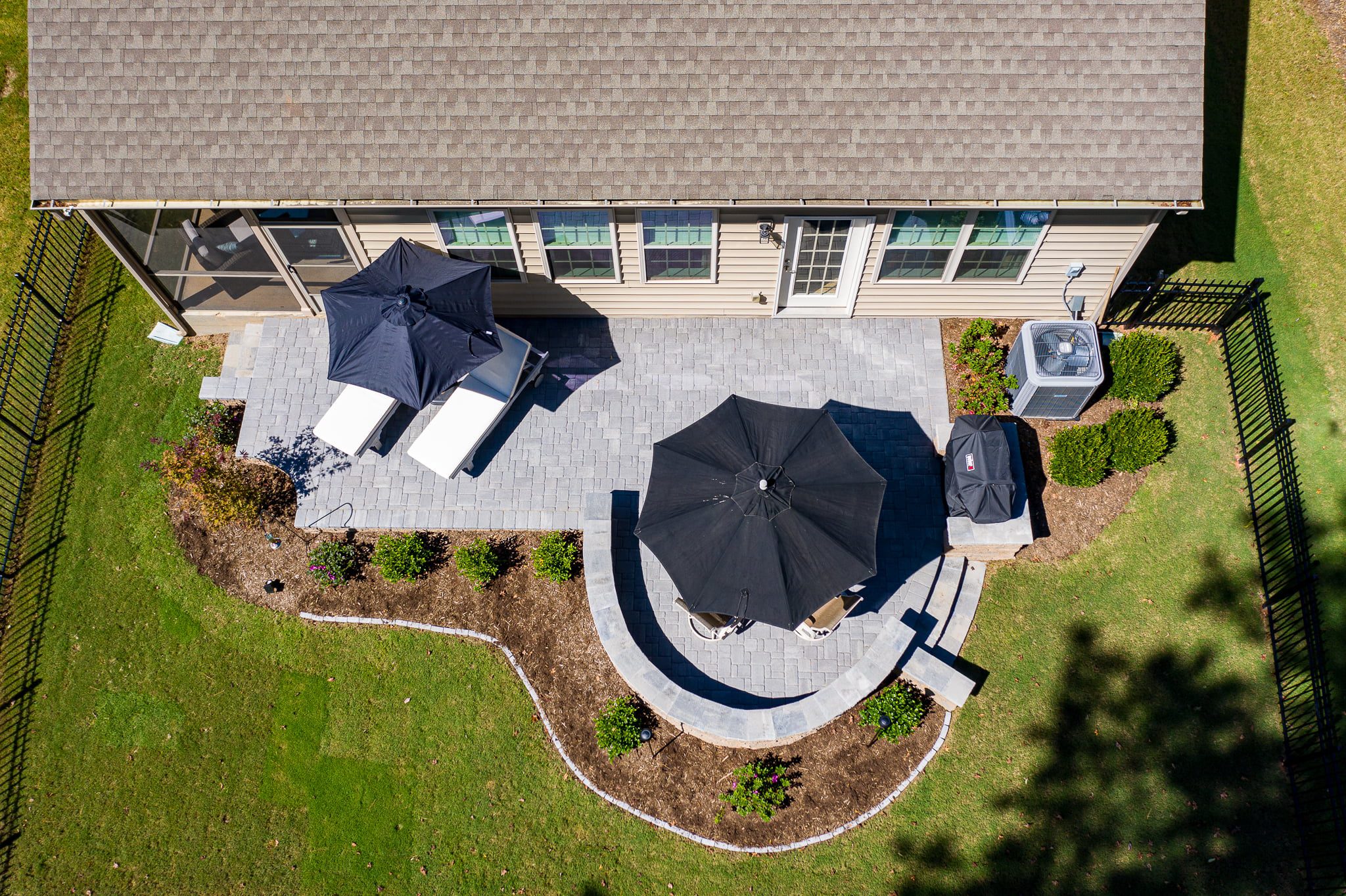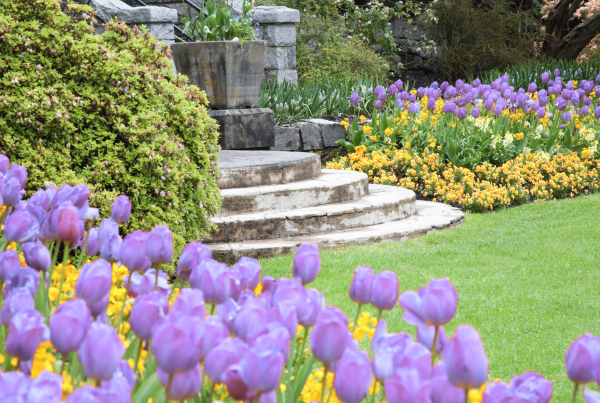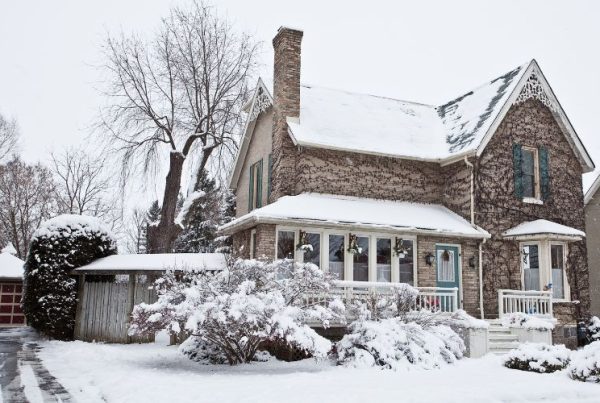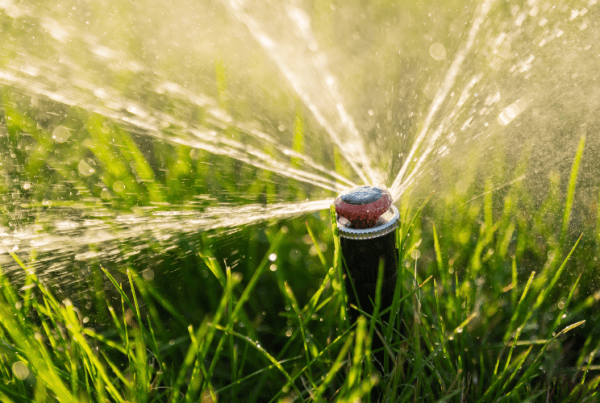Mulch is a landscaping powerhouse. A fresh blanket of pine straw or wood chips can make your roses pop and hedges shine. It can also help improve the fertility of the soil while subduing pesky weeds. But mulch can be perplexing to many Charlotte homeowners. It evokes questions like, “When is the best time to mulch?” and “How do I put down mulch?” Many are even unsure of what mulch is made of.
Fortunately, mastering mulch need not be complicated. Read on to get the dirt on this helpful ground covering.
Benefits of Mulch
First and foremost, mulch just looks good. Coming in a variety of colors, from rich browns to peppery reds, the ground covering adds contrast and visual interest to landscapes. A freshly-mulched garden has even been shown to increase property value. According to Homelight, a $340 investment in mulch yields a $769 return on investment.
But the benefits go beyond aesthetics. Mulch helps homeowners achieve Goldilocks soil—dirt that is neither too wet nor too dry. It does this by breaking up hard clays, allowing water and air to move more freely, and shading the soil.
Mulch defends against pesky weeds as well. Since weed seeds need dirt to grow, a thick layer of straw or compost acts as a defensive layer, never allowing crabgrass or dandelions to take root. A thick layer of mulch will also prevent existing seeds from growing by blocking out much-needed sunlight.
Ideal Times to Mulch
When is the best time to mulch flower beds? The question is simple enough, and yet it raises a fair amount of controversy in the gardening community. Many tried-and-true gardeners argue that spring is the best season for mulching while others advocate for taking action in the fall. To determine when is the best time to mulch your yard, read on.
Spring Mulching
Springtime mulching is ideal for Charlotte homeowners who are concerned with the season’s influx in weeds. Since invasive sedges and grasses flourish in warmer temperatures, applying a thick layer of ground covering in mid- to late-spring can stop their growth. Many homeowners also prefer spring mulching because it affords a “fresh” look as their plants and bushes begin to bloom.
Fall Mulching
Fall is a less common, though arguably more practical, time to mulch. In addition to killing weeds that germinate later in the year, autumn mulching insulates the soil, creating a warmer environment for important microorganisms and insects like earthworms. These critters play a vital role in decomposing organic matter, cycling nutrients, and fertilizing the soil. Healthier soil means better water retention and fewer weeds in the future.
Many professional landscapers also prefer fall mulching because it insulates plant roots. On a typical winter day in North Carolina, the ground will freeze as temperatures drop in the evening, only to thaw the next day. These freeze-thaw patterns take a toll on plants. Mulch can help by keeping the underlying soil warm.
How Much Mulch Do I Need?
As a general rule, a one- to two-inch layer of fine mulch will do. Shredded hardwood is an example of fine mulch. If your mulch is coarser, like pine nuggets, apply a three- to four-inch layer. Nevertheless, remember to use discretion when applying the ground covering. Too much, especially when applied too early in the spring, can prevent the soil from warming up. Plants also struggle to break through a deep layer of mulch.
How to Put Down Mulch
Many Charlotte homeowners choose to mulch around trees, shrubs, and other plants. Where you mulch depends on your goals. Do you want to protect fragile plants? Are you attempting to stifle weeds? Or do you just want to jazz up your front yard?
Once you answer these questions, it is time to get to work. Gather some basic gardening tools like a pitchfork, rake, and wheelbarrow and place small mounds of mulch in the desired locations. Then, using a pitchfork or gloved hands, spread the mulch to the desired depth. Again, finer mulch should be spread in one- to two-inch layers whereas coarser mulch should be applied in two- to four-inch layers. Leave at least one inch of “breathing room” between tree trunks and mulch.
Choosing the Best Mulch
We have talked at length about this landscaping powerhouse. But what is mulch made of? Mulch consists of either inorganic materials like stone, gravel, and rubber or organic materials like compost, bark chips, and pine straw. Inorganic mulches are aesthetically appealing and can help control weeds. Organic mulches are decorative but also provide the soil with much-needed nutrients.
What material you select depends on your yard. Stone mulch, for instance, is very attractive in cacti and succulent gardens; however, it is not a great insulator and does little to nourish the underlying soil. Comparatively, pine bark nuggets impart nutrients when they break down, but are prone to washing away. If you are unsure of which mulch type is best for your yard, consult a landscaping professional.
Other Mulching Tips
When it comes to mulch, more is not better. Over-mulching can prove to be very detrimental to the health of your trees, plants, and soil. If mounded at the base of a tree, for instance, the organic matter can retain too much water, causing the roots and bark to rot.
You should also be mindful when mulching perennials, or plants that come back year after year, like hostas and peonies. It is important to wait until the ground is frozen. Applying mulch too soon will cause frost heaving, which is when water in the dirt freezes and expands, forcing the soil upward. Applying mulch too late will expose the fragile roots to unbearable temperatures.
How often should I replace mulch?
Typically, organic mulch will last five to six years. However, the longevity of your mulch depends on a variety of factors like sun exposure, rain, wind, and foot traffic. Many Charlotte homeowners prefer to refresh their mulch in the summer to help with moisture retention or in the winter to insulate from cold temperatures.
What is the best time to mulch flower beds?
The best time to mulch flower beds is mid- to late-spring. Mulching too soon after winter will keep cold air in the ground, preventing the soil from heating up. Mulching too late in the season will keep the ground too warm, preventing plants from entering what is called “plant dormancy.”
Can you plant flowers in mulch?
Though it is possible to plant flowers in mulch, most seasoned gardeners prefer to plant in soil because it is often richer in nutrients and microorganisms. Mulch does have its place, though. A few inches of fine mulch can help insulate against extreme temperatures and encourage proper irrigation.
Can you put mulch over grass?
Mulch suppresses weeds by blocking needed sunlight, and it will do the same to your grass. Mulch is an easy and affordable way to remove turf. Otherwise, it should not be applied to your yard.
How much does mulch cost?
Mulch costs vary. Whereas hardwood mulches cost $30 to $60 per yard, higher-end mulches made from cedar or cypress trees cost $40 to $47 per yard. Pine straw is typically cheaper than bark mulch, though homemade composts made from leaf litter and yard clippings are free.
Benefits of Working With a Professional Landscaper
Determining the best time to mulch can be challenging. Thankfully, MetroGreenscape has over 20 years of experience working with Charlotte landscapes. We will build the right lawn maintenance plan for you, applying mulch that is both aesthetically pleasing and beneficial to your existing flowers and shrubs. To get started, contact us today for a consultation.







